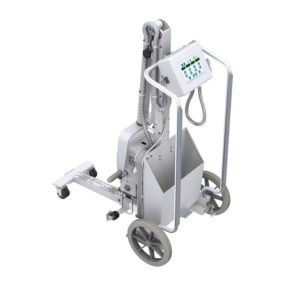

Mastering the Art of X-Ray Imaging: A Comprehensive Guide to Understanding and Preventing Artifacts

X-rays have played a vital role in medicine and diagnostics since their accidental discovery in the late 19th century. Attributed to Wilhelm Rontgen in 1895, this breakthrough technology has revolutionized the medical field, enabling physicians to diagnose a wide array of conditions, from bone fractures to cancer. However, even with their incredible utility, X-rays are not immune to imperfections. X-ray artifacts can compromise image quality, leading to misdiagnoses and the need for repeated tests. In this definitive guide, we will delve into the world of X-ray artifacts, understand what they are, and most importantly, learn how to avoid them.
What is an X-ray Artifact? An X-ray artifact is an unwanted distortion or flaw in an X-ray image that hinders its clarity and accuracy. These imperfections can range from minor nuisances to significant obstacles in making an accurate diagnosis. Common X-ray artifacts include motion artifacts, finger marks, black lightning marks, crescent-shaped white lines, clear spots, ghosting, stitching artifacts, dead pixels, and scratches.
Why X-ray Artifacts are Problematic: X-ray artifacts are problematic for several reasons. Firstly, they can obscure critical details in the image, making it challenging for medical professionals to interpret the results correctly. For example, patient movement during the X-ray procedure can blur the image, rendering it almost useless for diagnostic purposes. Additionally, artifacts such as specks or scratches on a patient’s bone can be mistaken for real anomalies, leading to unnecessary follow-up tests, which waste time and resources.
Even if an artifact is recognized as such, it may necessitate repeating the X-ray, inconveniencing the patient and potentially reflecting poorly on the healthcare provider’s efficiency.
How Do X-Ray Artifacts Occur: X-ray artifacts can result from various factors, ranging from technical errors during image capture and processing to inadequate patient preparation. Let’s explore some of the specific ways these artifacts can infiltrate your X-ray images:
- Technical Errors: Mistakes in the X-ray image acquisition process can introduce multiple artifacts. These include small trapezoidal regions caused by debris in the X-ray machine housing, backscatter from visible electronics behind the patient, grid cutoff due to improper grid positioning, radiopaque lines resulting from incorrect detector orientation, and white dots (dead pixels) often originating from problems with digital X-ray machine transistors.
- Patient Movement: Inadequate patient preparation is a common cause of artifacts. Patients must be instructed not to move during the X-ray, and in some cases, to hold their breath. Clear communication about when to hold still can significantly reduce the risk of motion artifacts. Additionally, patients should remove or reposition any radiopaque items like jewelry or glasses, as these can obstruct X-ray images.
It’s essential to recognize that the type of artifacts may vary depending on the X-ray technology in use. Digital X-ray machines and traditional film X-ray machines each have their unique challenges. While traditional film X-ray machines are generally more affordable, they are more susceptible to user errors, especially in image preparation and development. In contrast, digital machines allow for immediate image review and re-capture, providing an advantage in correcting errors while the patient is still present.
How to Avoid X-Ray Artifacts:
Preventing X-ray artifacts requires a combination of factors, including technical expertise, attention to detail, and patient cooperation. Properly trained staff should follow established procedures for image acquisition without taking shortcuts or overlooking key steps. In addition, instructing patients to remove any items that could interfere with the X-ray and remain still during the procedure is crucial. Familiarity with common artifacts also helps in their prevention.
Taking these precautionary measures will lead to clearer and more reliable X-ray images, ensuring accurate diagnoses and a smoother patient experience. By mastering the art of X-ray imaging and avoiding artifacts, healthcare professionals can provide the best possible care to their patients.



